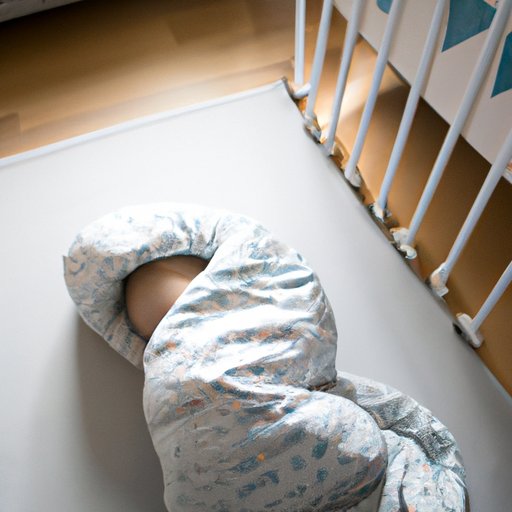Introduction
Getting your baby to nap without being held can be a challenge for many parents. It is natural for babies to want to be close to their parents, but it is important to help them learn how to soothe themselves so that they can get restful sleep. Fortunately, there are several strategies that can help you get your baby to nap without being held.
Establish a Routine
Setting a consistent schedule for bedtime and naps is an important part of helping your baby learn how to fall asleep on his own. This will help him understand when it is time for sleep and give him a sense of security.
When creating a routine, think about the activities that your baby enjoys before bedtime. For example, do they like a warm bath or listening to a soothing story? Make sure these activities are included in the routine each night. Additionally, try to keep the routine the same every night so that your baby knows what to expect.
Create a Comfortable Sleep Environment
Creating a comfortable sleep environment is essential for helping your baby get restful sleep. The room should be dark, quiet, and cool. If it is too bright, noisy, or warm, your baby may have difficulty falling asleep.
Blackout curtains or shades can be used to darken the room. You can also use a fan or white noise machine to create a consistent sound that can help muffle outside noises. Additionally, keeping the temperature in the room slightly cooler than usual can help keep your baby comfortable during sleep.
Rock and Hum
One way to help your baby transition from being held to sleeping in their crib is to rock or hum while slowly lowering them into the crib. This will help them feel secure and relaxed as they drift off to sleep.
Start by rocking your baby in your arms while humming a soothing song. As your baby gets drowsy, slowly lower them into the crib while still humming the song. Once your baby is in the crib, continue to hum until they are fully asleep.
Use White Noise
White noise can be very helpful for getting your baby to sleep. It creates a constant sound that can block out other noises and help your baby relax. There are many different types of white noise that you can use, such as ocean waves, rain, or even vacuum cleaner sounds.
You can use a white noise machine, app, or even just a fan to create the sound. Make sure to keep the volume low so that it is not too loud or disruptive.
Swaddle
Swaddling your baby can also be beneficial. Swaddling helps to provide a sense of security and comfort for your baby, which can help them fall asleep faster. To swaddle your baby, lay them down on a blanket and wrap the edges of the blanket around their body. Make sure to leave enough room for their legs to move freely.
Offer a Transitional Object
Offering your baby a transitional object, such as a stuffed animal or blankie, can also help them feel secure and relaxed. A transitional object gives your baby something to hold onto and cuddle with when they are in their crib. Choose an object that is soft and comforting for your baby.
Conclusion
Getting your baby to nap without being held can be a challenge, but with a few simple strategies, you can help your baby learn how to self-soothe and get the restful sleep they need. Establishing a routine, creating a comfortable sleep environment, using white noise, swaddling, and offering a transitional object are all effective ways to help your baby sleep without being held.
(Note: Is this article not meeting your expectations? Do you have knowledge or insights to share? Unlock new opportunities and expand your reach by joining our authors team. Click Registration to join us and share your expertise with our readers.)
